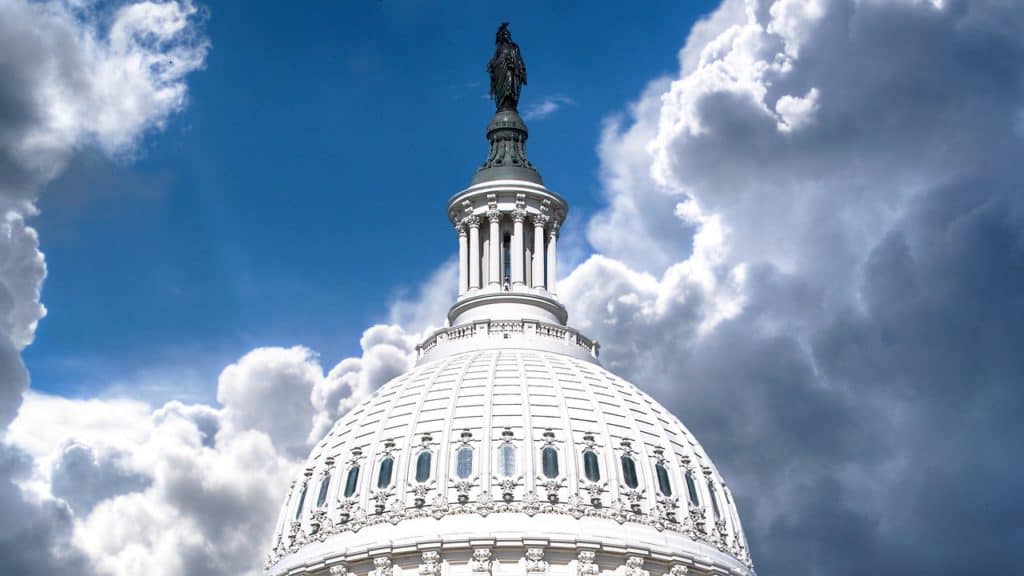GET YOUR FREE CONSULTATION! CALL NOW 301-610-3473
Umbilical cord blood and tissue collection in Washington D.C.
Umbilical cord blood and tissue are collected immediately after birth via a non-invasive and pain-free procedure.
The umbilical cord is clamped and cut as usual, but instead of discarding the placenta and umbilical cord, they are collected by a trained healthcare professional.
The blood is extracted from the cord using a sterile needle and collected into a specialized bag with anticoagulants to prevent clotting. The tissue is collected by cutting a small piece of the cord and placing it into a sterile container.
Both cord blood and tissue are then transported to a laboratory for processing and storage.
This procedure is a safe and effective way to collect valuable stem cells that can be used for future medical treatments.


Umbilical cord blood and tissue storage near Washington D.C.
Umbilical cord blood and tissue are valuable sources of stem cells, which have the potential to treat a wide range of diseases.
To ensure the preservation of these stem cells, they are collected at the time of birth and stored in specialized facilities.
The most common method of storage is cryopreservation, where the stem cells are slowly frozen and stored in liquid nitrogen at -196°C.
This ensures that the stem cells can be retrieved and used for medical purposes for many years to come. Additionally, many cord blood banks also offer the option to store the umbilical cord tissue, which contains a different type of stem cell that can also be used for medical treatments.
Overall, proper storage of umbilical cord blood and tissue is crucial for their potential use in future medical treatments.

CORD BLOOD BANKING IN WASHINGTON D.C.
What is Cord Blood banking in Washington D.C.?
Cord blood banking is a procedure that has been gaining increased attention in the medical world for its potential to help treat a range of diseases and medical conditions.
In simple terms, cord blood banking involves collecting and storing stem cells from a newborn’s umbilical cord. These stem cells are rich in potential and can be used to help treat a range of illnesses, including certain cancers, blood disorders, and genetic diseases. As a result, many expectant parents are now considering cord blood banking as a way to secure their child’s health for the future.
The process of banking umbilical cord blood involves collecting the blood immediately after birth and sending it to a specialized facility for processing and storage.
The cost of storage can vary depending on the service provider and the length of storage time chosen. There are many factors to consider when deciding whether to bank cord blood, including family medical history and the potential future use of the stem cells.
What is cord and tissue banking in Washington D.C.?
Cord tissue banking involves the collection and storage of the cord tissue, which is the gel-like material that surrounds the blood vessels in the umbilical cord. This tissue is rich in stem cells, which are the building blocks of the body’s immune and blood systems. The stem cells found in cord tissue are different from those found in cord blood, making it a valuable resource for future treatments.
Washington D.C.
Washington District of Columbia, commonly referred to as Washington D.C., sits at the heart of the United States of America as the nation’s capital. This bustling metropolis is home to some of the most iconic landmarks and institutions in the country, including the White House, the Capitol Building, and the National Mall. From politics and history to culture and art, Washington D.C. is a city that offers something for everyone.
As the seat of the federal government, Washington D.C. plays a crucial role in shaping the nation’s policies and laws. It is a hub of political activity, where lawmakers, diplomats, and lobbyists converge to debate and advance their respective agendas. The city is also home to numerous museums, galleries, and cultural centers that preserve and showcase the rich history and diversity of the United States.
But Washington D.C. is more than just a center of power and culture. It is also a vibrant city with a unique personality and flavor. From the colorful neighborhoods of Georgetown and Adams
1. Seat of the U.S. government
Washington, D.C. is the capital city of the United States and is home to the seat of the U.S. government. The city was established in 1790 specifically to serve as the capital of the newly formed country. It is located on the East Coast of the United States, bordered by Maryland to the north and Virginia to the south. The U.S. government operates from a number of buildings and offices located in Washington, D.C., including the White House, the Capitol Building, and the Supreme Court. These buildings represent the three branches of the U.S. government, with the White House serving as the executive branch, the Capitol Building housing the legislative branch, and the Supreme Court serving as the judicial branch. As such, Washington, D.C. plays a vital role in the functioning of the U.S. government, and is an important location for both domestic and international affairs.
2. Historical landmarks and monuments
Washington District of Columbia is renowned for its historic landmarks and monuments, attracting millions of visitors every year. The National Mall, a two-mile-long park that houses many of these landmarks, is a must-visit for those interested in the history of the United States. The Washington Monument, a towering obelisk that stands at 555 feet, is one of the most iconic landmarks in the city. Similarly, the Lincoln Memorial, a tribute to the 16th President of the United States, is a beautiful structure that features a 19-foot statue of Abraham Lincoln. The Jefferson Memorial, which honors the third President of the United States, is another popular landmark in the city that visitors flock to. With so many historical landmarks and monuments to explore, Washington DC is truly a destination that captures the essence of the United States and its rich history.
3. World-class museums and galleries
Washington District of Columbia is a hub of cultural activity and boasts an impressive collection of world-class museums and galleries. The Smithsonian Institution, one of the largest museum complexes in the world, has 19 museums and galleries in the district alone. The National Museum of American History, the National Air and Space Museum, and the National Gallery of Art are just a few of the many renowned museums that draw millions of visitors each year. Additionally, the Hirshhorn Museum and Sculpture Garden and the Smithsonian American Art Museum offer unique and thought-provoking exhibits. Visitors can immerse themselves in the rich history and diverse art forms that the district has to offer, making it an ideal destination for art and culture enthusiasts.
4. Internationally diverse dining options
Washington District of Columbia (D.C.) is a vibrant and diverse city that offers an array of dining options to satisfy every palate. Among these options are the internationally diverse dining establishments that provide a taste of cuisine from around the world. From Ethiopian to Thai and everything in between, D.C. has something for everyone. These dining options are not only delicious but also provide a unique cultural experience for those looking to expand their culinary horizons. Whether you are a local or a visitor, exploring the international food scene in D.C. is a must-do for any food enthusiast.
5. Vibrant nightlife and entertainment scene
Washington, D.C., the capital of the United States, is a city with a vibrant nightlife and entertainment scene. From the bustling streets of Adams Morgan and U Street to the upscale neighborhoods of Georgetown and Dupont Circle, the city offers a diverse range of entertainment options for locals and tourists alike. Visitors can enjoy live music performances, comedy shows, and theater productions at world-renowned venues such as the Kennedy Center and the Warner Theatre. The city is also home to a number of trendy bars, clubs, and restaurants, many of which stay open until the early hours of the morning. Whether you’re looking for a casual night out with friends or a refined evening of fine dining and cocktails, Washington, D.C. has it all.
6. World-renowned universities and colleges
The Washington District of Columbia is home to some of the world’s most prestigious universities and colleges. With a reputation for academic excellence, these institutions attract students from all over the world who seek to further their education and gain valuable experience. The district is home to Georgetown University, a private research university renowned for its excellent faculty and rigorous academics. American University is another top-tier institution, known for its strong emphasis on social justice and global leadership. The George Washington University is also located in the district and is recognized for its diverse student body and cutting-edge research facilities. With these and other world-renowned universities and colleges, the Washington District of Columbia is a hub for higher education and intellectual growth.
7. Thriving business and entrepreneurial community
The Washington District of Columbia is a thriving hub for businesses and entrepreneurship. The city’s strategic location and favorable business environment attract entrepreneurs, investors, and innovators from all corners of the world. The district’s diverse economy, which includes government, technology, tourism, and hospitality, provides ample opportunities for startup companies to grow and thrive. In addition, the city offers various resources and support systems to help businesses launch and scale, including mentorship programs, networking events, and access to funding. The entrepreneurial community in the district is known for its collaborative spirit and culture of innovation, making it an ideal place for startups to establish themselves and make a mark in their respective industries.
8. Diverse and unique neighborhoods
Washington District of Columbia is a highly diverse area with unique and vibrant neighborhoods, each with its own culture, history, and charm. From the lively and bustling streets of Dupont Circle, to the historic and picturesque Georgetown, there is something for every individual in the city’s diverse neighborhoods. The U Street Corridor is known for its rich musical history and cultural significance, while Capitol Hill offers a blend of historic architecture, modern developments, and a strong sense of community. The Adams Morgan neighborhood is known for its eclectic mix of diverse cultures, restaurants, and nightlife. The neighborhoods of Columbia Heights, Shaw, and Petworth are quickly becoming hotspots for restaurants, bars, and shopping. With such a range of neighborhoods, Washington DC offers a unique and diverse experience for all visitors and residents alike.
9. Convenient public transportation system
Washington District of Columbia is an urban city that is well-known for its efficient and convenient public transportation system. The Washington Metropolitan Area Transit Authority (WMATA) operates the public transit system in the city, which includes buses, trains, and metro lines. The buses run frequently and cover almost all corners of the city. The metro lines connect Washington DC to neighboring areas and provide an affordable and convenient mode of transportation for commuters. The city also has designated bike lanes and bike-sharing services, which add to its transportation options. Overall, the public transportation system in Washington DC is reliable, efficient, and cost-effective, making it an ideal choice for locals and visitors alike.
10. Umbilical cord blood and tissue banking in Washington D.C.
Umbilical cord blood and tissue banking is an important process to consider for expectant parents in Washington D.C. Cord blood and tissue banking allow parents to store the blood and tissue from their baby’s umbilical cord after birth for potential future therapeutic use. In Washington D.C., there are several accredited cord blood banks that offer this service, including CBR (Cord Blood Registry), Viacord, and Cryo-Cell. These cord blood banks collect and store cord blood and tissue, which contains valuable stem cells that can be used to treat various diseases and conditions such as leukemia, sickle cell anemia, and other genetic disorders. It is important to note that cord blood and tissue banking is a personal decision that should be made after careful consideration and consultation with a healthcare provider.
In conclusion, Washington District of Columbia is a vibrant and dynamic city that offers a wealth of attractions and opportunities. From its iconic monuments and museums to its diverse neighborhoods and thriving business sector, there is something for everyone in the nation’s capital. While the city faces ongoing challenges, including issues of inequality and social justice, the resilience and determination of its residents continue to drive positive change and progress. As the city continues to evolve and grow, it will undoubtedly remain a vital and influential hub of culture, politics, and innovation for many years to come.
GET YOUR FREE CONSULTATION! CALL NOW 301-610-3473
GET YOUR FREE CONSULTATION! CALL NOW 301-610-3473
GET YOUR FREE CONSULTATION! CALL NOW 301-610-3473
Table of Contents
Toggle
